Remote Patient Monitoring & the Future of Telehealth
Remote patient monitoring (RPM) has been around since the 1970s in one form or another. In fact, RPM is one of the earliest applications of telehealth, used before that term had even been coined.
In today’s rapid shift to value-based care and reimbursement, remote patient monitoring and care management are expanding and evolving as integral elements of the fast-growing telehealth ecosystem; so rapidly, in fact, that it can be difficult to keep up with all of the new developments and innovations!
Importantly, this category of healthcare is a highly relevant illustration of how the healthcare industry in the U.S. is evolving overall.
Do I Need to Read This Article?
The question of who needs to understand and prepare for what the future of remote healthcare management will look like and how it will affect them might better be phrased as, who doesn’t? Those who definitely need to stay updated and informed on these possibilities include:
- Physicians, clinical and even administrative staff
- Patients
- Caregivers (family and non-family)
- CMS (Medicare and Medicaid) and commercial payers (health plans)
- Researchers
- Politicians
- Community leaders
- Social scientists and social workers
- Psychologists and other behavioral health providers and advocates
- Everyone working in any capacity in the medical technology industry (including marketers, salespeople, software developers, IT personnel, and many others)
Have we left anybody out? Well, include them, too. That’s how important and pervasively these technological advances will impact our society — and sooner than you may realize.
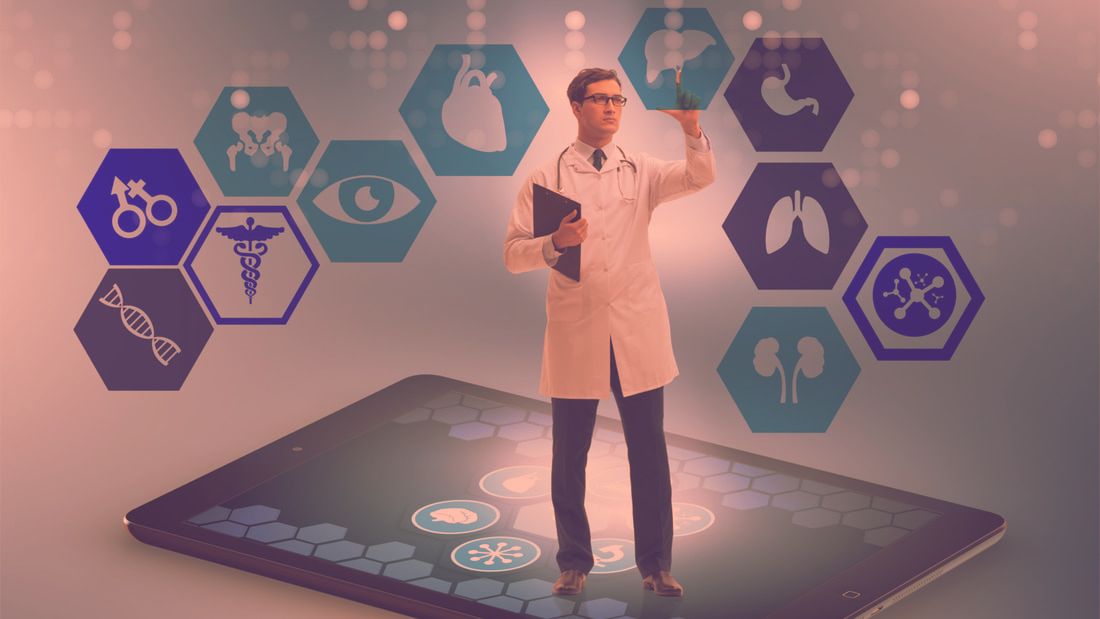
Factors Driving Rapid Advances in RPM & Telehealth
Medical breakthroughs and improvements in medical care have allowed people to survive diseases, and adverse health occurrences, that they previously would not have. As a result, the average life expectancy for Americans is now almost 80 years, with many living into their 90s and beyond.Chronic Diseases Increase as People Age
The older we get, the more health problems we are likely to experience. Many of these are chronic, recurring health conditions that require ongoing care management.A short list of these conditions includes:
- Diabetes
- Cardiac disease (including heart failure, stroke, and other cardiac conditions)
- Chronic obstructive pulmonary disease (COPD)
- Gastrointestinal diseases
- Alzheimer’s
- Dementia
- Cancer *
(*Cancer has not been traditionally characterized as a chronic disease, but with increasing survival rates, cancer survivors must be constantly monitored after remission.)
Chronic Disease Management is Expensive
The cost of ongoing treatment and management of chronic diseases continues to increase as more people are able to survive longer with chronic health problems.
Without health improvements based on proactive and effective treatment and management of these conditions — and proactive focus and care designed to prevent these conditions, or at least intervene early to limit the negative health impact — the cost of healthcare for patients, and the systems supporting them, becomes unaffordable and unsustainable.
Chronic diseases require constant assessment and proper care planning by healthcare providers, patients, caregivers, and payers. Chronic disease management also depends on patient compliance to recommended care plans and adherence to prescribed medications.
Most patient compliance and adherence behaviors occur outside of a medical clinic or in-patient environment, driving the need for remote monitoring, assessment, better provider-patient communications, and adaptive care planning adjustments.
Frequently described as “connectivity” or “connected care,” the financial goal of this type of technology and proactive care management is to reduce costs through reduced hospital admissions and readmissions, reduce length of stay, reduce in-hospital device evaluations, reduce follow-up office visits and, hopefully, improve health statuses.
Aging Baby Boomers Drain Financial Systems
There are roughly 77 million Baby Boomers (those born between 1946 and 1964) in the U.S. (born between 1946 and 1964). Of that group, 10,000 are reaching age 65 every single day, and that trend will continue into the 2030s.
Medicare, the U.S. government health program for seniors administered by the Centers for Medicare and Medicaid Services (CMS), cannot possibly keep up with and afford the increased cost of medical care for this large, aging segment of the population — particularly not in the traditional fee-for-service reimbursement model.
Healthcare Shifting to Value-Based Reimbursement
The healthcare reimbursement payment model is rapidly shifting from fee-for-service to value-based reimbursement. This change is being led by CMS and will be closely followed by commercial insurers.
The new payment model is intended to encourage, measure, and reward higher quality care delivery across the continuum, improved health outcomes, improved patient engagement, and fewer and shorter hospital admissions and readmissions — all at a reduced cost. Value based reimbursement is based on a proactive focus on disease prevention, preemption, early intervention, effective case planning, patient monitoring, and care management.

Jerry Kolosky is a digital health consultant specializing in healthcare strategy and policy. He serves as a Senior Advisor to the chronic care management platform company, eCare21. He explains,
“It’s important to understand that healthcare delivery unfolds in the context of healthcare policy and how and what kind of care is reimbursed. What is new and important is the emergence and rapid evolution of reimbursement policies that support the delivery of care at a distance via remote patient monitoring and related technologies.
“Until recently, Telehealth has primarily focused on video consultations between providers and patients, an approach that serves as a proxy for a visit to the practice or another physical care setting. Meanwhile, Remote Patient Monitoring, a powerful set of technologies critical to the delivery of proactive “care in place” – have largely been neglected from a policy perspective.
“But now, beginning with the availability of Common Procedural Terminology (CPT) code 99091 in January of 2018, eligible physicians may receive reimbursement for time spent reviewing and interpreting patient health data captured and transmitted via remote patient monitoring devices within the home. And for the 2019 Physician Fee Schedule, Centers for Medicare & Medicaid Services (CMS) is expected to adopt 3 newly approved CPT codes to more fully support Remote Patient Monitoring, addressing the areas of patient education in deployment of remote monitoring devices, management of the clinical data, and delivery of the remote care service.”
Remote Patient Monitoring as a Subcategory of Telehealth
Triple Aim & Quadruple Aim
The Institute for Healthcare Improvement (IHI) has defined a patient-focused Triple Aim aligned with healthcare reform and the movement toward value-based care. The three goals in the Triple Aim are: 1) improving population health, 2) enhancing the patient experience, and 3) reducing the per capita cost of healthcare.
More recently many in the healthcare industry have subscribed to the addition of a fourth goal, creating the Quadruple Aim. The fourth objective is to prevent, and combat, provider burnout by fostering an environment that restores providers’ joy and fulfillment in their practice of medicine.
Remote patient monitoring and other telehealth solutions address many aspects of the Triple and Quadruple Aims, which is another reason for these systems’ rapid growth.
Goals for RPM & Other Telehealth Solutions
Goals for TPM and other telehealth solutions include:
- Greater, more convenient access to healthcare for many patients
- Reduced healthcare costs across the full cost spectrum
- Reduced ER visits, hospital admissions, and readmissions
- Improved patient satisfaction
- More effective monitoring and support of chronic disease patients outside clinic and hospital settings
- Early identification of and intervention with high-risk patients
- Empowerment of patients to be more proactive, responsible, and effective in their own health statuses and behaviors
- Improved health outcomes
- Increased revenue reimbursement incentives for providers
- Efficient processes to help provider organizations monitor, assess, and manage care based on remotely provided patient health information
Devices: Implantable & Non-Invasive
Pacemakers and implantable cardiac defibrillators (ICD) are familiar examples of devices that are invasively implanted under the skin, but non-invasive devices doing similar work are proliferating rapidly.
Non-invasive devices include the whole category of “wearables” that can detect and record vital signs (pulse rate, temperature, respiration rate, blood pressure, etc.) as well as other data, from step counting and other fitness tracking (think Apple Watch, Fitbit, etc.) to sleep pattern monitoring, hydration status and metabolism, glucose levels, physical biofeedback, and more.
The Human Factor
Patient adoption of, and engagement with, remote monitoring is a critical requirement and a big challenge for many reasons. While some parts of the process of reminding, encouraging, and motivating patients can be done electronically through text, email, and other programmable messaging, there is a general consensus that these forms of electronic communication cannot always substitute or eliminate the need for person-to-person forms of communication and interaction.
It is understandable that programmable, electronic communication with patients is appealing because of its potential to save time and money by freeing up personnel that would otherwise need to devote their time and attention towards direct, remote interaction with patients. Additionally, some patients even prefer electronic communications to human conversation for a variety of reasons.
However, remote patient engagement and support sometimes requires (or at least benefits from) human interaction.
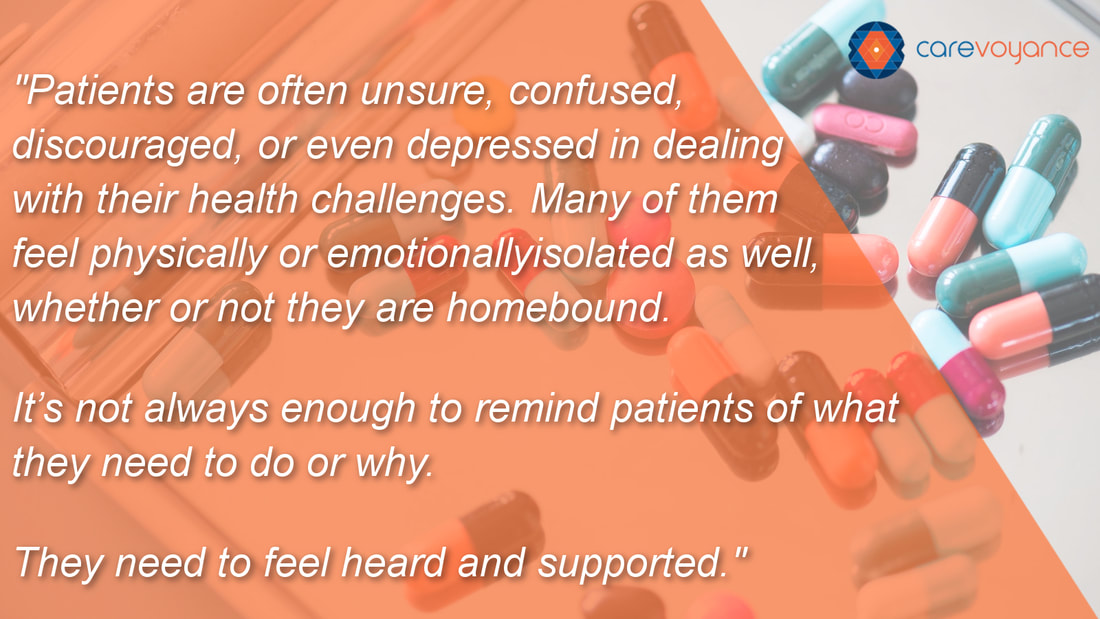
Advanced Telehealth Solutions provides trained call center staff (primarily nurses) to help healthcare organizations engage and motivate patients to adopt, comply with, and continue to adhere to use of prescribed devices and/or manual reporting, in addition to complying with medication prescriptions and engaging in other important health behaviors that these patients need to be encouraged to “own.”
Karen Thomas, President of Advanced Telehealth Solutions, reports that patients often need that human touch encouragement in order to take more control of their own healthcare and be “partners” with their providers in that respect.
“We provide and require motivational training for all of our call center staff. Patients are often unsure, confused, discouraged, or even depressed in dealing with their health challenges. Many of them feel physically or emotionally isolated as well, whether or not they are homebound. It’s not always enough to remind patients of what they need to do or why. They need to feel heard and supported.
We also work with some behavioral health programs and organizations where patients may have both a clinical and behavioral diagnosis, but everyone needs some level of human interaction, support, and encouragement if you expect them to become engaged and committed to doing what is in their own best interest because they feel more empowered.”
Electronically Recorded Data
Some remote patient monitoring solutions exclusively utilize electronically recorded data, while other solutions rely — to a greater or lesser degree — on patient participation and manual data entry as either an adjunct or alternative to electronic data.
Dr. Kevin Campbell is an internationally recognized cardiologist and electrophysiologist who specializes in the diagnosis and treatment of heart rhythm disorders. He is also CEO of PaceMate™, a cloud-based HIPPA compliant, vendor-neutral software and platform that filters cardiac data in real time into clinically actionable information. The data includes customized alerts, EMR documentation, automated billing codes, and cataloged data, including demographics, medication, patient input, and patient outcomes.
Pacemate™ combines automation and human communication as the company also employs its own highly trained clinical staff of nurses and devices technicians—all of which are certified as IBHRE or CCDS clinicians. The staff is expert at not only device interpretation, but also can handle many of the time-consuming responsibilities of clinical staff.
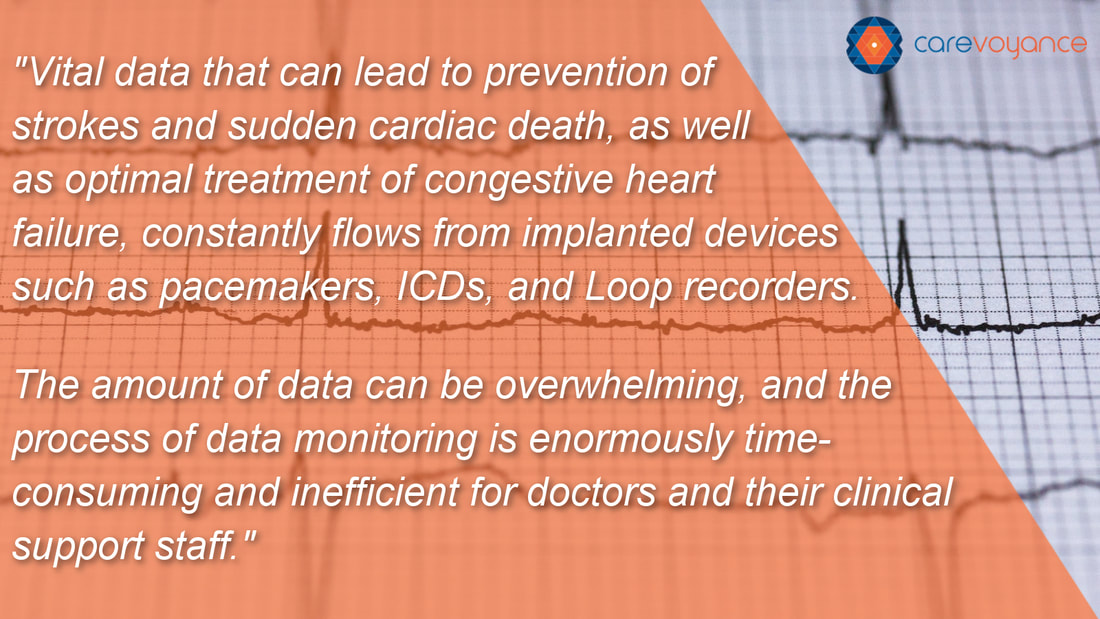
According to Dr. Campbell, “Remote monitoring poses many challenges for electrophysiologists, general cardiologists, and patients. Vital data that can lead to prevention of strokes and sudden cardiac death, as well as optimal treatment of congestive heart failure, constantly flows from implanted devices such as pacemakers, implantable cardioverter defibrillators (ICDs), and Loop recorders. The amount of data can be overwhelming, and the process of data monitoring is enormously time-consuming and inefficient for doctors and their clinical support staff.
“PaceMate™ provides an organized, accurate, and efficient way to process these data and deliver timely reports and alerts to physicians that allow them to intervene early and, ultimately, to save lives.”
On the patient side, Dr. Campbell notes, “We believe that when patients are engaged in their own healthcare, outcomes are improved. PaceMate™ connects patients with their devices, providing them access to their own biometric data and helping patients share responsibility for their own heart health.”
Patient Manual Data Entry
Not all remote monitoring solutions are based on transmission of electronically captured medical data.
Force Therapeutics is a complete episode-of-care management software and platform focused on at-home, presurgical preparation and postsurgical virtual rehabilitation for patients who undergo hip and knee replacement. The Force model is based on a data-supported belief that patients who take an active role in their care have better outcomes. They set out to create a solution that empowers patients to take control of their recovery.
Patients receive detailed, case-specific instructions from their surgeon and care team through the Force platform and app. This process connects the surgeon and care team to the patient outside of the clinic setting to guide the patient through remote preparation and postsurgical, at-home rehabilitation. In the process, patient-entered and submitted progress data is monitored and assessed by the care team.
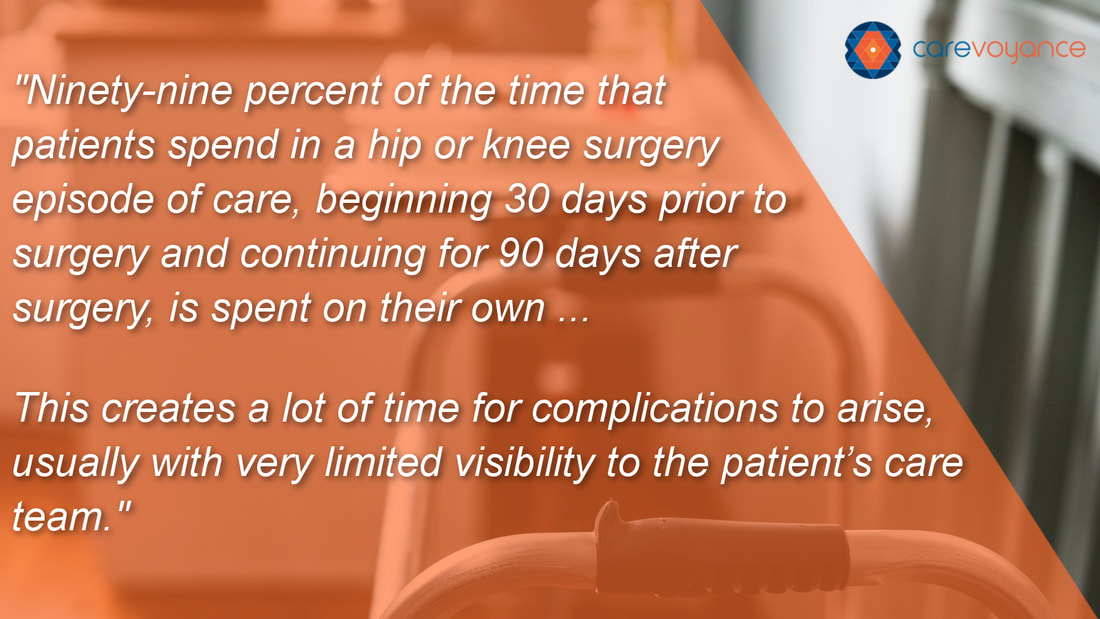
“Ninety-nine percent of the time that patients spend in a hip or knee surgery episode of care, beginning 30 days prior to surgery and continuing for 90 days after surgery, is spent on their own — outside of the medical clinic or surgery setting,” says Jake Hungarter, Senior Associate, Client Development and Strategy for Force Therapeutics. “This creates a lot of time for complications to arise, usually with very limited visibility to the patient’s care team.
“In addition to the software and app, we employ a Patient Success team to help patients get comfortable — and engaged — in navigating the platform and using the app on a consistent basis, as well as answering technical questions. We are constantly working to improve the user experience for patients as well as their care teams.”
What About Prevention?
Much of the emphasis on remote patient monitoring is understandably focused on effective monitoring and case management of chronic diseases.
However, with 75 percent of healthcare costs being associated with lifestyle diseases like diabetes and hypertension, the cost curve can be bent even more powerfully in the right direction if proactive prevention of predictable chronic diseases like diabetes and hypertension can be achieved through early intervention and greater patient ownership of their health and lifestyle.
PreventScripts offers a software platform and app made to serve its ambitious mission of empowering patients, through their primary care physicians, to change lifestyle behaviors that fuel our obesity epidemic and directly associated chronic diseases, including diabetes and hypertension.
The PreventScripts solution also makes it possible for primary care physicians to take advantage of MACRA’s financial incentives tied to prevention management.

Natalie Hodge, MD, co-founder and Chief Medical Officer of PreventScripts, is a pediatrician who has treated many young patients who suffer medical challenges associated with early-age obesity.
“While literally billions of adults worldwide are at risk for developing diabetes and hypertension based on lifestyle choices, there are also far too many adolescents, preteens, and teenagers — particularly in the U.S. — who are already obese at an early age and at risk for developing chronic diseases that will negatively impact their health, quality of life, and longevity.
“Our app features a gamified interface featuring reminders, encouraging messages, and social interaction tools that make it easy and appealing for both adults and younger patients to set measurable, healthy lifestyle goals in conjunction with their doctors and to keep track and report on their health goals and progress, which is then reported back to their physicians.
“Prevention Management is about intervening early for our most at-risk patients. An intensive behavioral change approach can even reverse chronic diseases in some cases.
“Physicians have a hard time talking with patients about obesity because it is such an emotional, personal issue. PreventScripts structures an obesity intervention program for providers in a way that eases its integration into their practice culture and, at the same time, enables patients to see that their providers really care about them.”
Connectivity Platforms
Regardless of whether connectivity data is captured electronically, manually entered by the patient, or some combination of both, the devices and apps used (and the patients utilizing them) need to be connected to provider organizations, caregivers, health plans, employers, and/or others in the patient’s telehealth ecosystem.
Integration with patients’ electronic health records is an ongoing process with frequent challenges. So is determining workflow, including how (and by whom) the data is managed, reviewed, and interpreted, as well as for subsequent communications and medical interactions with patients based on providers’ analysis and interpretation of the data.
Some platforms are programmed to automatically alert providers to patient data that fall outside of established medical parameters, so that real-time assessments can be made for those patients at potentially higher medical risk. Patient messaging, prompts, and reminders are often programmed into the platforms as well.
Some platforms are device-agnostic and thus compatible with many devices and apps from different vendors. Other platforms are compatible with a defined and more limited set of devices.
The Role of Artificial Intelligence in Remote Patient Monitoring
Artificial intelligence is already beginning to be introduced into remote patient monitoring.
Pete Stevenson is Chief Operating Officer and Chief Security Officer at eCare21, a Chronic Care Management & Remote Patient Monitoring technology platform. He observes how AI is likely to apply in the near future to Remote Patient Monitoring, explaining,
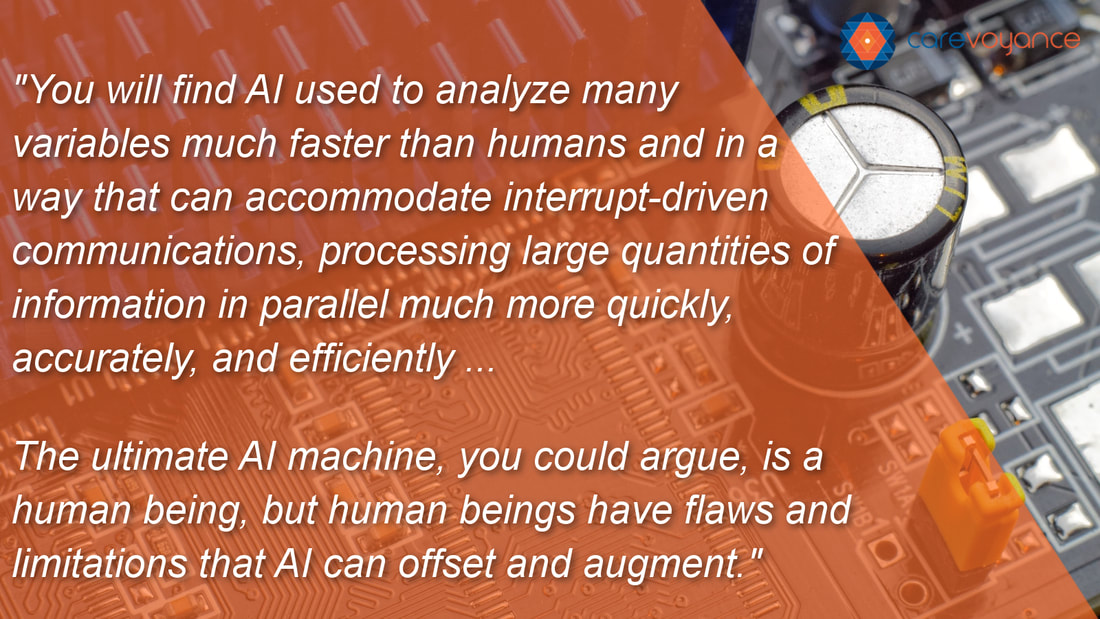
“Natural Language Processing – one form of AI – for example, can be used in many different ways. This includes determining what people are saying very quickly, encoding that in text, and interpreting the meaning in real time. NLP can extract key data elements from unstructured narratives – either provider or patient – and map those data elements to structured fields in the EMR in order to improve clinical data integrity and to inform clinical decision-making systems
“Chat applications are an example. Siri or Alexa will analyze language and craft responses on a learning-based interpretation and understanding of what has been conveyed by the human voice and words. In the near future, physicians will be able to verbally engage with machines in a way that will free them up in terms of time needed to convey data and questions and access analyzed feedback.
“You will find AI used to analyze many variables much faster than humans and in a way that can accommodate interrupt-driven communications, processing large quantities of information in parallel much more quickly, accurately, and efficiently in contrast to humans who have more difficulty operating within interrupts.
“The ultimate AI machine, you could argue, is a human being, but human beings have flaws and limitations that AI can offset and augment. The eCare21 platform is perfectly positioned to take advantage of and be compatible with advances in AI and, specifically, Natural Language Processing.”
Summary
The bottom line on improving health outcomes and reducing healthcare costs — particularly for the predicted increased number of aging Baby Boomer patients with chronic diseases — will depend on what happens outside the hospital or medical clinic.
Patients will need to be educated to understand, and motivated to participate more proactively, in their own healthcare and providers will need to be able to monitor patient health and communicate with patients on a much more frequent and impactful basis outside the clinical setting.



Leave A Comment
You must be logged in to post a comment.